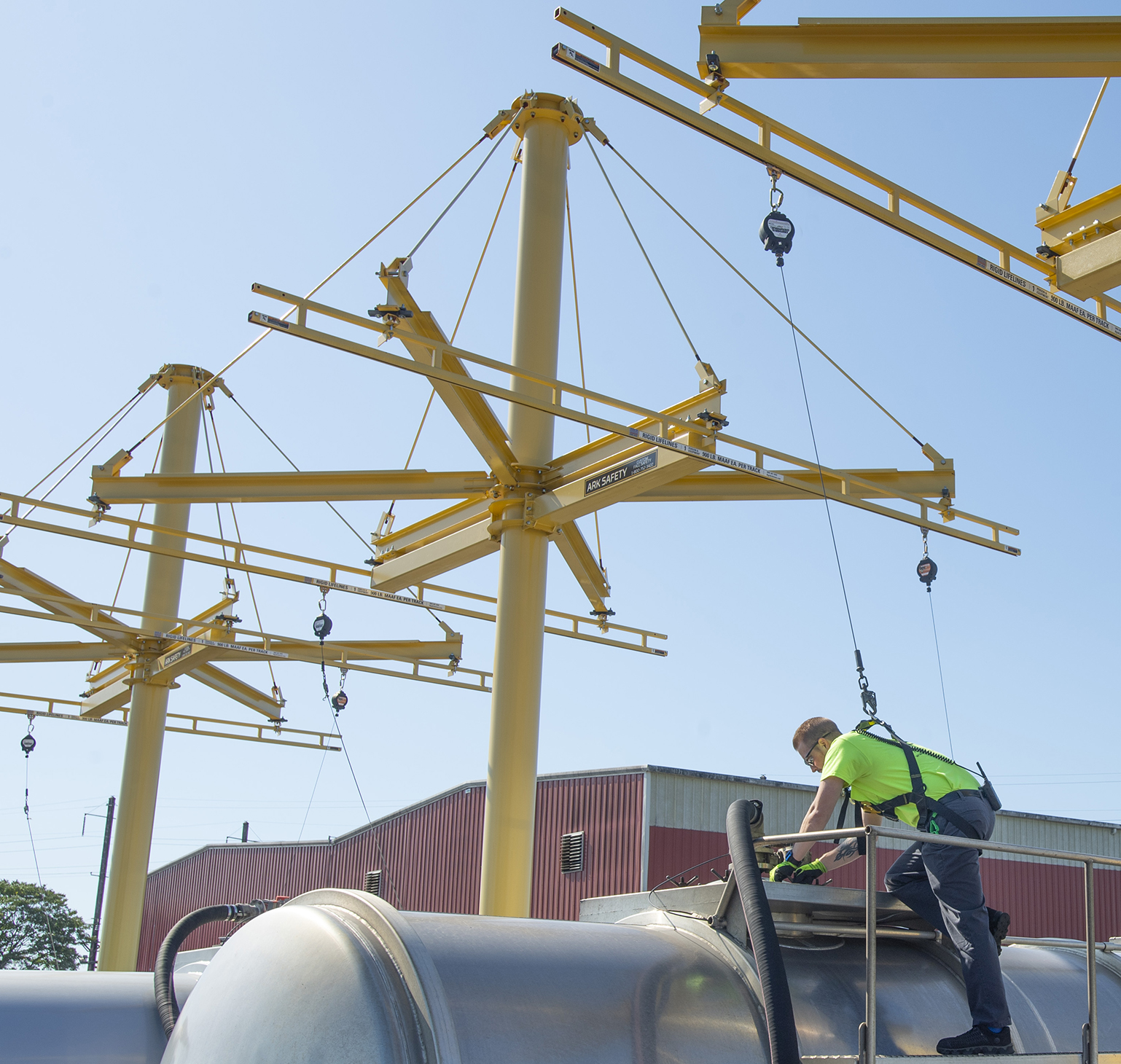
What to do After a Fall Event
September 10, 2019
Many of our blogs focus on ways to eliminate hazards, prevent workplace accidents, and avoid injuries. Many blogs also emphasize the kinds of hazards that remain after a fall is arrested, including swing falls and suspension trauma. But what about the steps to take after a fall event? What should you do after a worker has fallen? 
Rescue Plan
One of the most important things to do after a fall event actually starts well before anyone falls. To make a fall protection program as safe as possible, an effective and comprehensive fall rescue plan must be developed before the fall arrest system is put into service. Refer to ANSI Z359.2 for the complete minimum requirements for a “Comprehensive Managed Fall Protection Program.” When creating a rescue plan, it is important to recognize the dangers of suspension trauma. Relieving the pressure caused by a fall arrest harness is the first priority to avoid potential long-term damage.
The goal of a fall protection rescue plan is to get a fallen worker to safety as quickly as possible. The longer a worker is suspended by a fall protection harness, the greater the risk of suspension trauma. The quickest way for a fallen worker to be rescued is to perform a self-rescue, and there are many different types of equipment available to make self-rescue possible. The Rigid Lifelines Anchor Trolley™ reduces post-fall drift to keep workers near the working surface, increasing the possibility of self-rescue. Ladders and rope-grabs can also help workers return to working surfaces, and controlled-descent devices can safely lower the worker to the ground after a fall.
Assisted Rescue
Providing workers with self-rescue devices is a good first step in a rescue program, but it cannot be the only step in the plan. Under ideal circumstances, any worker who falls would be able to self-rescue, but when a fall arrest system is activated, the worker could become incapacitated. If a worker is incapacitated, someone must be available to perform an assisted rescue instead.
A comprehensive rescue plan is the most important when the need for assisted rescue arises. There are several aspects of a fall rescue plan that must be considered to make the system as safe as possible. Rescue plans should identify who is able to perform rescues, what equipment is needed and where it is kept, how much time rescuers have to carry out the plan, and any other information that may be specific to your facility or application.
One of the most important parts of any comprehensive fall protection program is training. Employees using fall protection must be trained on the proper use of every aspect of their fall arrest systems. Using correct, properly fitting harnesses, selecting appropriate self-retracting lifelines or energy-absorbing lifelines, knowing how to use trauma relief packs, and other training measures greatly improve employee safety and make post-fall rescue safer and easier.
Employees who might need to rescue a fallen worker must also be familiar with every aspect of the rescue plan and should practice the plan at regular intervals. With proper training, employees can be prepared to carry out the rescue plan quickly and safely.
After the Rescue
Rescuing the fallen worker isn’t the only thing that should be done after a fall event. After the worker is safely on the ground, there are additional steps that should be taken. The purpose of a fall arrest system is to prevent a worker from striking a lower level in a fall event, but managed fall protection programs are also intended to prevent falls in the first place. If a worker falls and must be stopped by fall arrest equipment, it may be an opportunity to perform a new fall hazard analysis to try to eliminate the cause of the fall before another fall can occur.
The hierarchy of fall protection provides examples of other measures that employers can take to protect workers from fall injuries, and options that prevent falls are preferred to options that arrest falls. If possible, eliminating the fall hazard altogether is the safest option. Passive fall protection, such as guardrails, and fall restraint systems can keep workers away from edges where they could fall to a lower level.
Workers’ actions can also lead to falls. Workers must be fully trained on the proper use of fall arrest systems to use them safely. After a fall event, it may be beneficial to evaluate how workers are using the fall arrest system and determine whether more or different training may be required.
Whenever a fall arrest system is implemented, there is the possibility that a worker could fall while using the system. Having a fall rescue plan for a fall protection system is as important as having the system itself. Every employee in the location of the fall protection system should be trained on the fall rescue plan, so they’ll know exactly what to do after a fall event before one ever happens. Read and follow all manufacturer instructions and requirements to ensure the fall protection equipment is used correctly and to make a rescue after a fall event as safe as possible.
Categories
Share this post
Let us help you
Contact us today to find the perfect product fit for your job
